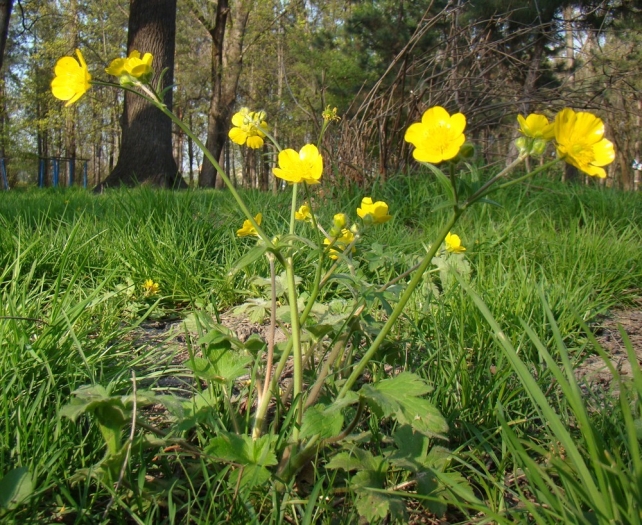Constantine Buttercup
(Ranunculus constantinopolitanus)
Constantine Buttercup (Ranunculus constantinopolitanus)
/
/

Юрий Данилевский (Yuriy Danilevsky)
CC BY 4.0
Image By:
Юрий Данилевский (Yuriy Danilevsky)
Recorded By:
Copyright:
CC BY 4.0
Copyright Notice:
Photo by: Юрий Данилевский (Yuriy Danilevsky) | License Type: CC BY 4.0 | License URL: http://creativecommons.org/licenses/by/4.0/ | Rights Holder: Юрий Данилевский (Yuriy Danilevsky) | Publisher: iNaturalist | Date Created: 2018-04-13T05:42:58-07:00 |






























Estimated Native Range
Summary
Ranunculus constantinopolitanus, commonly known as Constantine Buttercup, is a deciduous perennial herb that is native to a variety of habitats including meadows, grassy slopes, and along stream banks in Southeastern Europe and Western Asia. It typically grows to a height of 1-3 feet (0.3-0.9 meters) and a width of 0.2 feet (0.06 meters). The plant features glossy, green foliage and bears bright yellow, cup-shaped flowers that bloom in the spring and summer, adding a splash of color to garden settings.
Constantine Buttercup is valued for its vibrant yellow flowers which can enliven borders, wildflower meadows, and water garden peripheries. It thrives in moist, well-drained soils and can tolerate a range of light conditions from full sun to part shade. While it prefers high moisture levels, it is important to avoid waterlogged conditions to prevent root rot. This species can be propagated by seed or division in the spring. Gardeners should be aware that all parts of the plant are toxic if ingested, and it can be an irritant to skin and mucous membranes.CC BY-SA 4.0
Constantine Buttercup is valued for its vibrant yellow flowers which can enliven borders, wildflower meadows, and water garden peripheries. It thrives in moist, well-drained soils and can tolerate a range of light conditions from full sun to part shade. While it prefers high moisture levels, it is important to avoid waterlogged conditions to prevent root rot. This species can be propagated by seed or division in the spring. Gardeners should be aware that all parts of the plant are toxic if ingested, and it can be an irritant to skin and mucous membranes.CC BY-SA 4.0
Plant Description
- Plant Type: Herb
- Height: 1-2.5 feet
- Width: 0.08-0.2 feet
- Growth Rate: Moderate
- Flower Color: Yellow, Orange
- Flowering Season: Spring, Summer
- Leaf Retention: Deciduous
Growth Requirements
- Sun: Full Sun, Part Shade
- Water: High
- Drainage: Medium
Common Uses
Bee Garden, Bird Garden, Butterfly Garden, Deer Resistant, Low Maintenance
Natural Habitat
Meadows, grassy slopes, and along stream banks in Southeastern Europe and Western Asia
Other Names
Common Names:
Scientific Names: , Ranunculus constantinopolitanus, Ranunculus tauricus, Ranunculus villosus subsp. constantinopolitanus, Ranunculus lanuginosus var. constantinopolitanus, Ranunculus fibrillosus var. parviflorus, Ranunculus palaestinus, Ranunculus libanoticus,
GBIF Accepted Name: Ranunculus constantinopolitanus (DC.) d’Urv.